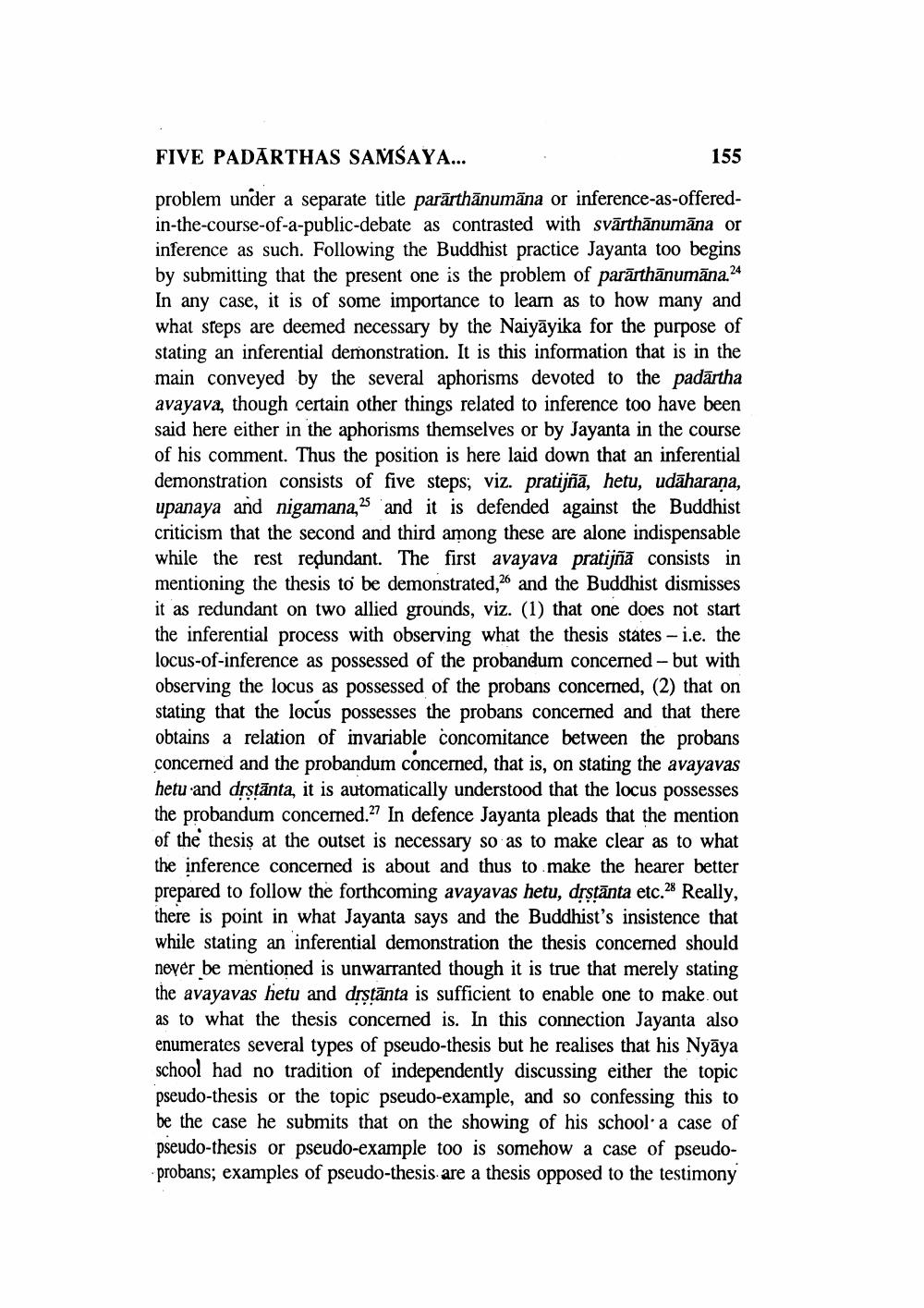________________
FIVE PADARTHAS SAMSAYA...
155
problem under a separate title parārthānumāna or inference-as-offeredin-the-course-of-a-public-debate as contrasted with svārthānumāna or inference as such. Following the Buddhist practice Jayanta too begins by submitting that the present one is the problem of parārthānumāna.24 In any case, it is of some importance to learn as to how many and what steps are deemed necessary by the Naiyāyika for the purpose of stating an inferential demonstration. It is this information that is in the main conveyed by the several aphorisms devoted to the padārtha avayava, though certain other things related to inference too have been said here either in the aphorisms themselves or by Jayanta in the course of his comment. Thus the position is here laid down that an inferential demonstration consists of five steps, viz. pratijñā, hetu, udāharana, upanaya and nigamana, 25 and it is defended against the Buddhist criticism that the second and third among these are alone indispensable while the rest redundant. The first avayava pratijñā consists in mentioning the thesis to be demonstrated,26 and the Buddhist dismisses it as redundant on two allied grounds, viz. (1) that one does not start the inferential process with observing what the thesis states - i.e. the locus-of-inference as possessed of the probandum concerned - but with observing the locus as possessed of the probans concerned, (2) that on stating that the locus possesses the probans concerned and that there obtains a relation of invariable concomitance between the probans concerned and the probandum concerned, that is, on stating the avayavas hetu and drstānta, it is automatically understood that the locus possesses the probandum concerned.?? In defence Jayanta pleads that the mention of the thesis at the outset is necessary so as to make clear as to what the inference concerned is about and thus to make the hearer better prepared to follow the forthcoming avayavas hetu, drstānta etc.28 Really, there is point in what Jayanta says and the Buddhist's insistence that while stating an inferential demonstration the thesis concerned should never be mentioned is unwarranted though it is true that merely stating the avayavas hetu and drstānta is sufficient to enable one to make out as to what the thesis concerned is. In this connection Jayanta also enumerates several types of pseudo-thesis but he realises that his Nyāya school had no tradition of independently discussing either the topic pseudo-thesis or the topic pseudo-example, and so confessing this to be the case he submits that on the showing of his school: a case of pseudo-thesis or pseudo-example too is somehow a case of pseudoprobans; examples of pseudo-thesis are a thesis opposed to the testimony




